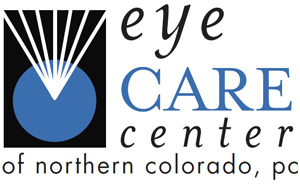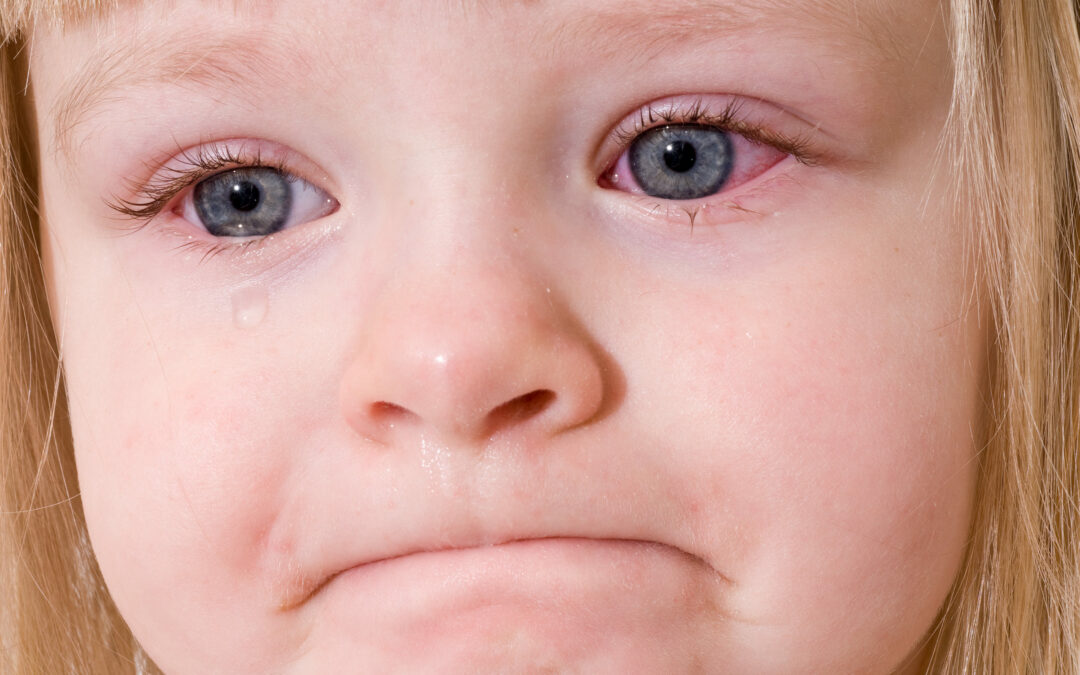Annual appointments are vitally important to your eye health, but we also see people for a variety of other symptoms and conditions. As the season gets colder, runny noses and sore throats begin to become a concern, especially with the kids back in school. One common condition, conjunctivitis (or pink eye) is often spread by children, but can affect us all.
In this blog, we will discuss the different types of pink eye, their symptoms, the best ways to prevent contracting or spreading it, and treatments.
What is Pink Eye?
Pink eye, or conjunctivitis, occurs when the membrane that lines the eyelid and the surface of the eye, called the conjunctiva, is inflamed. It can be caused by an allergy, bacteria, virus, or irritants. It can appear in one or both eyes and is sometimes highly contagious.
According to the American Academy of Ophthalmology, children are more likely than adults to contract viral or bacterial pink eye. “This is because they are in close contact with so many others in school or day care centers. Also, they don’t practice good hygiene.”
Allergic Conjunctivitis
Seasonal allergic conjunctivitis, or hay fever, is the most common allergic eye problem, and it is not contagious. Airborne allergens such as pollen, house dust, animal dander, cigarette smoke, and mold constantly bombard the eyes and can cause ocular allergies at any time. Fortunately, this is not a contagious condition.
Bacterial Conjunctivitis
Bacterial pink eye is incredibly contagious. It is caused by a bacterial infection. Bacterial and viral conjunctivitis spread by coming into direct contact with an infected person’s bodily fluids (mostly hand to eye). In the case of bacterial, you can also contract it from your own bacterial infection in your throat or nose.
Viral Conjunctivitis
Viral pink eye is the most common type of conjunctivitis. It is very contagious and often spreads through schools and crowds. It is caused by the same virus that causes the common cold.
Giant Papillary Conjunctivitis (GPC)
GPC is an inflammation of the inner surface of the eyelids, causing them to become roughened and inflamed. Hard, flat elevations in a cobblestone pattern develop on the undersurface of the upper eyelid, eventually irritating the entire eye. It is most frequently associated with contact lens wear or over-wear, or improper cleaning/storage of contact lenses.
GPC is not an infection, but a hypersensitivity of the membrane. It can occur at any time, even if you’ve worn your lenses successfully for years. It can be very uncomfortable and generally requires discontinuing your lenses for a period of time or permanently.
Symptoms
If you exhibit any of the following symptoms, call your Longmont, Lafayette, Greeley, or Boulder eye care center immediately to schedule an appointment. It is important to diagnose and treat your ailment quickly for your own relief, as well as to avoid the spread if bacterial or viral.
- Whites of the eyes appear pink or red
- Swollen eyelids
- Itchy eyes
- Burning, painful eyes
- Gritty feeling, or as though something is in your eye
- Sticky discharge from eye (could appear as mucus, pus, or thick yellow liquid)
- Tearing or watery eyes
- Sensitivity to light
- Blurry or hazy vision
How Can You Prevent Contracting or Spreading Conjunctivitis?
Viral and bacterial conjunctivitis are highly contagious, spreading easily from person to person. To greatly reduce the risk of getting or spreading viral or bacterial pink eye, follow these simple steps for good hygiene.
If you have viral or bacterial conjunctivitis-
- Wash your hands often with soap and warm water for at least 20 seconds. If soap and water are not available, use an alcohol-based hand sanitizer that contains at least 60% alcohol to clean hands.
- Wash pillowcases, sheets, washcloths, and towels you’ve used in hot water and detergent.
- Wipe surfaces you regularly touch such as computers, counter tops, etc.
- Stop wearing contact lenses until your eye doctor says it’s okay to start wearing them again, and then replace them with new lenses.
- Clean eyeglasses
- Do not share personal items such as pillows, washcloths, towels, eye drops, eye or face makeup, makeup brushes, contact lenses, contact lens storage cases, or eyeglasses.
- With clean hands, wash any discharge from around your eye(s) several times a day using a clean, wet washcloth or paper towel. Throw away the paper towels after use, and wash used washcloths with hot water and detergent. Then wash your hands again with soap and warm water.
- Before and after cleaning, or applying eye drops or ointment to your infected eye, wash your hands. Use paper towels to dry your hands.
- Avoid touching or rubbing your eyes. This can worsen the condition or spread it to your other eye.
- Finish all medications as directed.
- Do not use swimming pools.
- “Bacteria can live in makeup. This can cause pink eye and even a dangerous infection of the cornea. Do not use eye makeup while your eyes are infected. Replace your makeup if you have an eye infection. And never share eye makeup with others,” the AOC advises.
If you have allergic conjunctivitis-
- See an allergist
- Avoid allergens
- Shower after spending time outdoors
- Wash pillows and pillowcases often
- Keep windows closed
- Keep household filters clean
Treatment
Treatment options for pink eye depend on the underlying cause of the infection. It may include:
- Eye rinses
In the case of allergic conjunctivitis-
- Allergy treatment
- Antihistamine eye drops, over the counter or prescription
- Prescription steroid eye drops
- Cold compresses
In the case of bacterial infection-
- Antibiotics
- Antibiotic eye drops, prescribed by an eye doctor
In the case of viral infection-
- Waiting it out
- Cold compresses
In the case of GPC-
- Changing to a new brand of contact lens, using a daily disposable contact lens system, and/or switching to a hydrogen peroxide-based cleaning system.
- Limiting the amount of time the contact lenses are worn, your eye doctor will give you a new wearing time schedule.
Conjunctivitis, or pink eye, usually resolves in 1-2 weeks. However, if you have prolonged symptoms, be sure to call us at your local Boulder, Lafayette, Greeley, or Longmont eye doctor to ensure you don’t have a more serious eye problem.
Resources and References
https://eyecaresite.com/common-conditions/
https://eyecaresite.com/eye-care/common-eye-disorders/conjunctivitis/
https://www.aao.org/eye-health/diseases/pink-eye-conjunctivitis
https://eyecaresite.com/eyecare/allergies-and-the-eyes/
https://eyecaresite.com/eyecare/preventing-the-spread-of-conjunctivitis/
https://www.aao.org/eye-health/diseases/pink-eye-conjunctivitis
https://eyecaresite.com/eyecare/giant-papillary-conjunctivitis-gpc/

